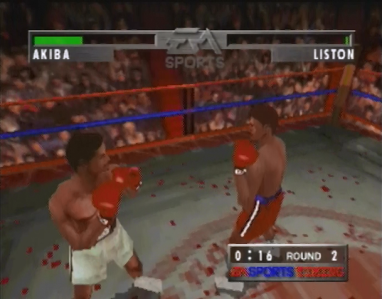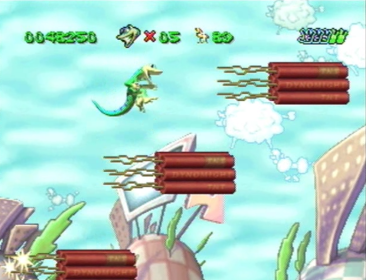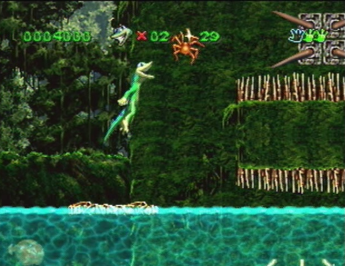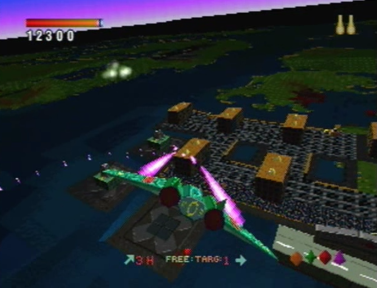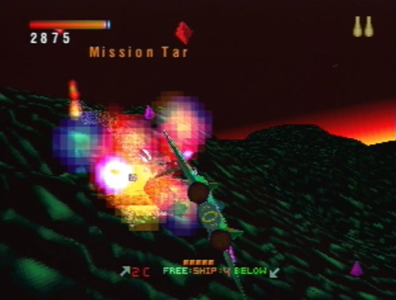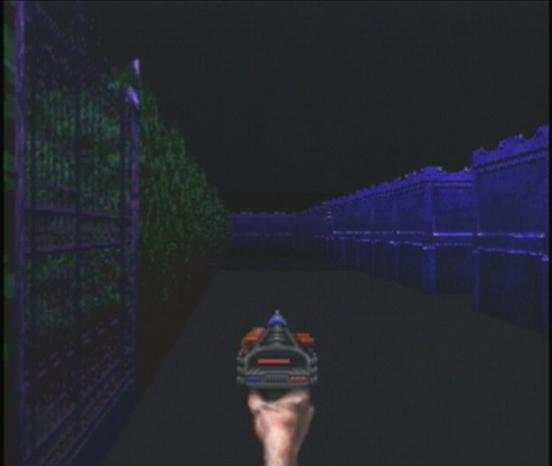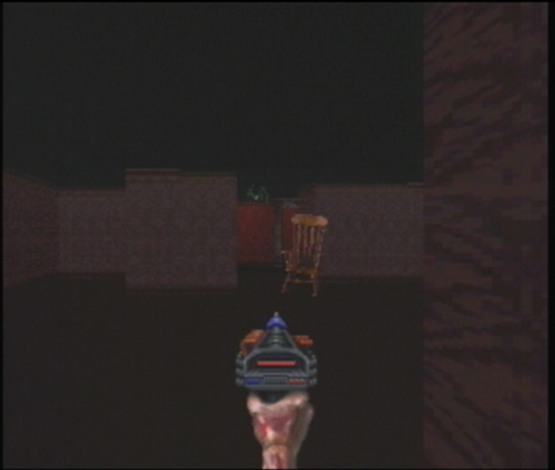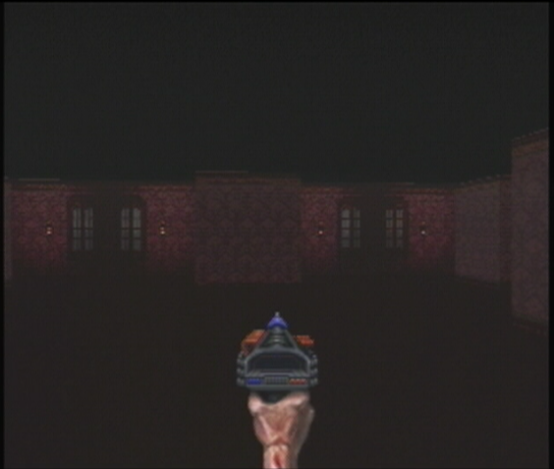Jurassic Park Interactive comes from Universal Interactive Studios as a tie-in game for the hugely popular 1993 blockbuster, based on Michael Crichton’s titular novel. Playing someone trying to rescue the lost crew of the movie on Isla Nublar, you must guide them to safety and then hack into Dennis Nedry’s security minigames to evacuate them.
Upon beginning the game, players are given a lovely view of the island from the film. However, you quickly find out that the short snippet of film at the start is all you will end up seeing of familiar sights of Jurassic Park. There is no Sam Neil, no Laura Dern. Instead we get a fat guy that kind of looks like Wayne Knight and a bunch of generic actors that look nothing like the people they are supposed to be portraying. These actors are seen in brief cutscenes in between stages and that is about it.
 You select from a series of places on a map of Isla Nublar that will trigger a stage. There are three methods of gameplay here. The first being riding in a Ford Explorer away from a t-rex, shooting dilophosaurus in the jungle with a taser gun (despite shotguns being available) and being chased through a maze by velociraptors. These stages are quick enough to fun the first couple of times but they quickly become repetitive. The raptor maze *should* be the most fun but it’s a very tired experience with little content and it’s very easy to get killed by a raptor. Additionally, the dilophosaurus stage can become incredibly tedious if trees keep getting in the way of your shots. Finally, the t-rex stage is not surprisingly, the best. You drive down the road attempting to avoid fallen logs and other cars in the way and it’s a very simple experience. However, it’s fun and straightforward and it’s easily the best looking stage as well.
You select from a series of places on a map of Isla Nublar that will trigger a stage. There are three methods of gameplay here. The first being riding in a Ford Explorer away from a t-rex, shooting dilophosaurus in the jungle with a taser gun (despite shotguns being available) and being chased through a maze by velociraptors. These stages are quick enough to fun the first couple of times but they quickly become repetitive. The raptor maze *should* be the most fun but it’s a very tired experience with little content and it’s very easy to get killed by a raptor. Additionally, the dilophosaurus stage can become incredibly tedious if trees keep getting in the way of your shots. Finally, the t-rex stage is not surprisingly, the best. You drive down the road attempting to avoid fallen logs and other cars in the way and it’s a very simple experience. However, it’s fun and straightforward and it’s easily the best looking stage as well.
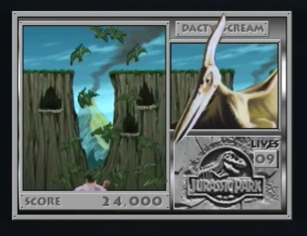 Playing through the aforementioned stages, however, is not the only way to progress through the game. While your primary goal is to get all of the survivors to the dock, you also have to get them some help. How do you do that? Hack into Nedry’s security protocols! How do you do that? By playing knock-off Galaga. There really wasn’t any imagination put into these little mini-games and although it is consistent with Nedry’s style that he would lock out potential hackers with gimmicks, they are just variations on Galaga, Asteroids and other 80’s arcade games. This shows a distinct lack of imagination and despite being delayed, this is still all they could come up with.
Playing through the aforementioned stages, however, is not the only way to progress through the game. While your primary goal is to get all of the survivors to the dock, you also have to get them some help. How do you do that? Hack into Nedry’s security protocols! How do you do that? By playing knock-off Galaga. There really wasn’t any imagination put into these little mini-games and although it is consistent with Nedry’s style that he would lock out potential hackers with gimmicks, they are just variations on Galaga, Asteroids and other 80’s arcade games. This shows a distinct lack of imagination and despite being delayed, this is still all they could come up with.
Even with being entirely underwhelmed with the mini-games presented to the player in Jurassic Park Interactive, I don’t 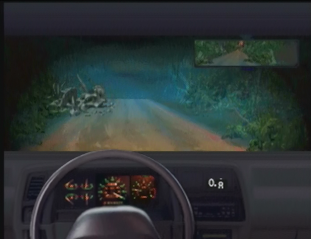 hate this title. The presentation is pretty endearing and the stages you play through are not poorly designed or unplayable, they just lack anything that makes them stand out from other games. The corridor crawling raptor game is a cheap Wolfenstein 3D style stage with no gunplay, just running and locking and unlocking doors. That said, it looks great and shows off some decent texturing and very little texture deformation. The raptors look sharp and the frame rate is pretty smooth. The dilophosaur stage, again, looks good. It’s sharp, sprite scaling is nice and it’s a very smooth experience. The t-rex stage, however, is fantastic. A moody fog effect and detailed textures make for some awesome atmosphere in such a condensed experience. It’s a tense stage, made more so by the look and feel of it.
hate this title. The presentation is pretty endearing and the stages you play through are not poorly designed or unplayable, they just lack anything that makes them stand out from other games. The corridor crawling raptor game is a cheap Wolfenstein 3D style stage with no gunplay, just running and locking and unlocking doors. That said, it looks great and shows off some decent texturing and very little texture deformation. The raptors look sharp and the frame rate is pretty smooth. The dilophosaur stage, again, looks good. It’s sharp, sprite scaling is nice and it’s a very smooth experience. The t-rex stage, however, is fantastic. A moody fog effect and detailed textures make for some awesome atmosphere in such a condensed experience. It’s a tense stage, made more so by the look and feel of it.
It’s funny that I found so much to say about Jurassic Park Interactive when there is very little actual content on presentation. It’s a multimedia driven experience that lacks the punch of a licensed cast but still manages to cram some enjoyment onto the CD. Bland mini-games were obviously added to pad out the experience and although they are kind of fun, they are also just generic knock-off versions of popular arcade games from the 70’s and 80’s. Do they push the 3DO? No, they don’t. The actual stages, however, do show some impressive development chops with the texturing, mood and atmosphere all being pretty good. There’s just such a lack of content that Jurassic Park Interactive fails to remain an engaging game over a long period of time and honestly, I will never pick this up again as there are much better games out there.



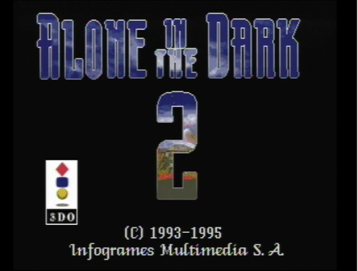
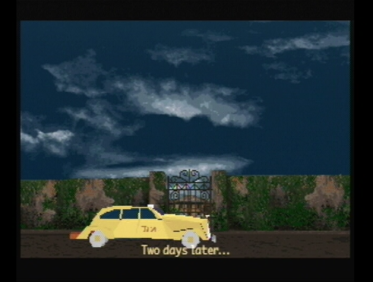
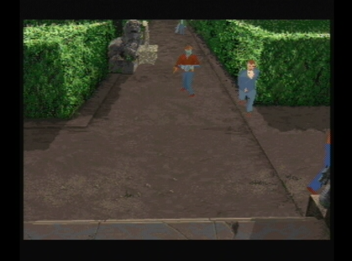

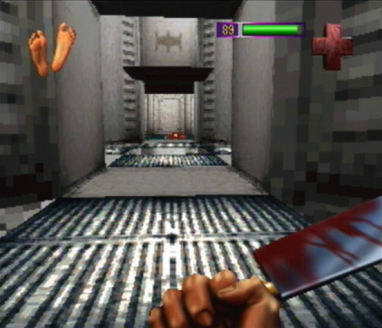
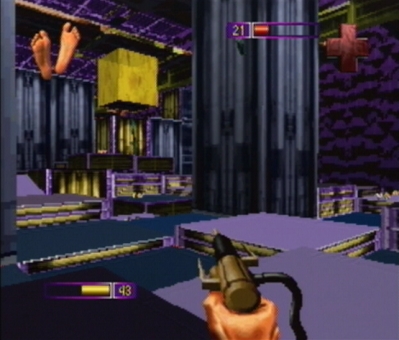 on the 3DO. Reflections, slick texture mapped environments, inventive vertical game design, it’s all here. The verticality of some levels is purely breath taking and coupled with the long draw distance you really feel like you’re playing a game that truly shows how powerful the 3DO is. I remember reading an article a while ago that featured an interview with Any Channel developers who explained that this was their roof for the 3DO. They used a lot of programming trickery (using lists to efficiently manage geometry calculation) that the Playstation couldn’t actually do, so it was harder for them to port the game to the Playstation than it was to develop it in the first place.
on the 3DO. Reflections, slick texture mapped environments, inventive vertical game design, it’s all here. The verticality of some levels is purely breath taking and coupled with the long draw distance you really feel like you’re playing a game that truly shows how powerful the 3DO is. I remember reading an article a while ago that featured an interview with Any Channel developers who explained that this was their roof for the 3DO. They used a lot of programming trickery (using lists to efficiently manage geometry calculation) that the Playstation couldn’t actually do, so it was harder for them to port the game to the Playstation than it was to develop it in the first place.


